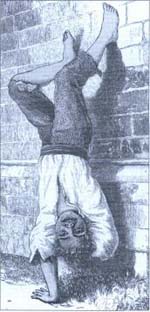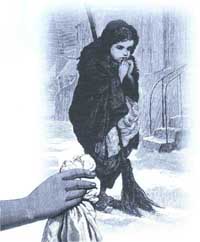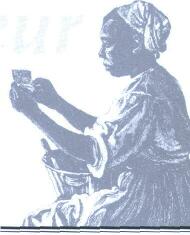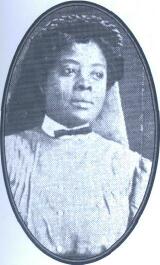C U R R I C U L U M M A T E R I A L S
|
|
Elaine F. S. Qadeem
|
Overview
Main Ideas
Eva C. Monroe was an African American social reformer who lived in Springfield, Illinois, during the late 1800s and early 1900s. She dedicated her life to assisting African American orphans. In 1898 she established the Lincoln Colored Home in Springfield, Illinois, which aided orphans and homeless elderly women. During the period 1898-1932 Monroe's business savvy and philanthropic efforts helped to sustain the school's budget. Her role as a black female social reformer, along with local donations of financial support, kept the orphanage open for many years. However, a shift from community-based welfare to state-based programs for the needy began the era in which state government established standards for facilities that housed children. In light of that development, Monroe did not have the proper credentials to supervise an orphanage under the new guidelines.
16
Eva Monroe's career ended with the creation of The Negro Children's Service Bureau of Sangamon County in 1933. In 1944 the home was sold at a public auction.
Connection with the Curriculum
This material could be used in any unit that includes the study of women's contributions to U. S. history or African American history. If these lessons are to be modified for the high school curriculum, emphasis might be placed on the importance of the black female club movement and the organizations to which notable black females belonged. Students should research Jim Crow laws and their implications for American society. Students should address the external forces that motivated black social reformers to establish institutions to serve the African American community.
These activities may be appropriate for Illinois Learning Standards 16.D.2c (US);
16.D. 3b (US); 18.B.2a; 18.B.2b; 18.C.3b. Language Arts standard 4.B.3a may be appropriate for Language Arts.
Teaching Level
Grade 6
Materials for Each Student
• A copy of the narrative portion of this article
• Activity handouts 1-4
• A piece of poster board for each child. The size is optional, but plan for a classroom bulletin board display.
• Crayons, colored pencils and/or markers
• One 2- or 3-inch three ringed binder for each student
• One sheet of 8 1/2 x 11 -inch paper for each student. It should be plain at the top half and lined for student writing on the bottom half.
Objectives for Each Student
• The student will be able to explain the importance of Eva Monroe's contribution as a social welfare reformer.
• The students will understand how the black female club movement assisted Eva Monroe in her efforts to improve the lives of children.
• The students will identify the obstacles that prevented Eva Monroe from continuing the care for orphans at the Lincoln Colored Home.
• The students will identify the important role that local philanthropists played in the success of the Lincoln Colored
Home.

|
SUGGESTIONS FOR TEACHING THE LESSON
|
Opening the Lesson
The teacher should begin preparing for this unit by reading the material as a reference for the first lesson presentation. An explanation of terms will be necessary so that the students will understand both the content and the historical context of Eva Monroe's contributions. Added context might be derived from a discussion of how nineteenth century women helped others. The presentation to students should include information about the organized female club movement, local philanthropists, as well as the historical importance of the Lincoln Colored Home. Biographical information about Eva C. Monroe should be part of the initial presentation to the students. The final part of the lesson should give the students information about the difference between the private social movement and the state standardization that forced Monroe to close the home.
Developing the Lesson
All of the exercises in this unit of study should be based on the narrative portion of the article. Prior to other activities, the following list of vocabulary words should be defined and discussed. Understanding these words will enhance the students' comprehension of the material. There are various ways to get students to match words and meanings. Use Handout 1 to review the word usage skills of your students prior to your reading of the narrative portion of the article with the students.
Vocabulary
Jim Crow
racism
reformer
social welfare
entrepreneur
segregation
discrimination
philanthropist
liaison
standard
orphan
credential
17
Handout 1 introduces and aids the student in understanding the new vocabulary word. The teacher could choose to use this handout as an assessment tool after the students participate in the dictionary activity.

Handout 2 allows the student to determine the important people and organizations that supported Eva Monroe's vision. Distribute the article to the students and read it with them, helping them to understand the concepts and vocabulary as they proceed. They should review the article in small classroom groups.
An understanding of the vocabulary and sequence of events is essential to completing Handouts 2 and 3.
Handout 3 should be used to allow the student to understand that a social reformer is dedicated to his or her cause. Eva C. Monroe showed this commitment in many ways. This handout can be used to guide discussion in a small group with one recorder reporting to the class. As an extension for the gifted student, this can be used as an opportunity for expository writing.
Handout 4 encourages the student to consider the meaning of an organization motto. The presentation of the poster should reflect knowledge of the issues that faced homeless African American women and children in the era of Jim Crow. The persuasive writing gives the student the opportunity to evaluate the factors that might encourage people to contribute financially to the Lincoln Colored Home.
Concluding the Lesson
A final class discussion should compare what happens to homeless African American children today to the era of the Lincoln Colored Home. This would be an opportunity to bring in a representative from an agency that works with homeless women and children. The speaker should be invited prior to discussions regarding comparisons.
Extending the Lesson
The students and teacher might visit the site of the Lincoln Colored Home. A picture of the class standing in front of the home should be taken. Students should place all of their Handout activity pages in their binders. The teacher should give each student a picture of class in front of the home. The students should glue the picture in the space on the top half of the lined paper, provided by the teacher. (See the note regarding the materials). On the bottom half of the lined paper, students can write reflections about their experience.
Assessing the Lesson
Grades for Handout 1 can be given as a percentage for the number of correct items. A rubric should be developed for the persuasive writing. If this writing is presented as a speech, as suggested, then the oral presentation should be graded separately. Question 1 on Handout 3 can be done as a class discussion. However, if it is done as a written assignment, a rubric should be developed that allows for a minimum of three things Eva Monroe did to show her belief in this motto. At least two difficulties should be mentioned by the student, with supporting rationale.
18

(Note: The key is at bottom of page.)
a. racism
b. reformer
c. social welfare
d. entrepreneur
e. segregation
f. advocate
g. discrimination
h. philanthropist
i. liaison
j. standards
k. orphan
I. credential

1. a person who gives money and time to organize a business
2. a child who has lost both parents
3. a person who writes or speaks in favor of something
4. showing of prejudice by treating someone in a less favorable way
5. a person whose job is making and maintaining a connection between groups or person.
6. teaching that one race is better than the others
7. a service to improve the living conditions of the people in a community
8. a letter or paper that shows that a person has a right to so something
9. a person who tries to make a situation better by removing faults
10. forcing people of different racial groups to live apart from each other
11. a person who shows a love for other people by giving time and money to help them
12. something set up by an authority for a model by which other things like it are to be compared
1. d; 2. k; 3. f; 4. g; 5. i; 6. a; 7. c; 8. l; 9. b; 10. e; 11. h; 12. j .
19


Create a time line with at least eight entries beginning with the year 1898 and ending in the year 1944. Your entries should show the persons, clubs, or agencies that influenced the success or failure of the Lincoln Colored Home.
20


During Eva Monroe's lifetime, Jim Crow laws mandated how Americans should interact with other races in the United States, especially in public places. These laws even influenced how poor homeless children would be cared for. Monroe joined many black female clubs. One of the clubs she joined became part of the Illinois Federation of Colored Women's Clubs (IFCWC). Its motto was "Loyalty to Women and Justice to Children."
1. Describe some of the things Eva Monroe did to show her belief in this motto. What are some of the difficulties she had?
2. Rephrase the motto in current terms.
21

Pretend we (the class) are in a club that can donate to the orphanage. Complete the following activities:
1. Write a three-paragraph speech persuading us that we should support an orphanage for homeless African American children and poor women.
2. Make a poster that displays the motto "Loyalty to Women and Justice to Children." Remember that it should reflect the need for reform during the early 1900s.
Click here to return to the article
22
|

